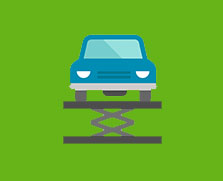Peugeot 306 MOT Results
Registered in 199560.3% pass rate
from 237 tests in 2021
More MoT Results
Failure rates by item
Here you can drill down into the failure rates for each item on the test. We've also compared the rates to the average results for 1995 cars and highlighted areas where the Peugeot 306 is unusually good or bad.
-
20% fail on
Brakes
(77% worse than other 1995 cars)
-
17% fail on
Brake performance
(140% worse than other 1995 cars)
-
13% fail on
Service Brake Efficiency (sp)
(2 times worse than other 1995 cars)
-
13% fail on
Rbt (sp)
(2 times worse than other 1995 cars)
- 8.0% fail on Service brake imbalance (3 times worse than other 1995 cars)
- 7.6% fail on Service brake performance (3 times worse than other 1995 cars)
-
13% fail on
Rbt (sp)
(2 times worse than other 1995 cars)
-
8.0% fail on
Parking brake efficiency (sp)
(200% worse than other 1995 cars)
- 8.0% fail on Rbt (sp) (2 times worse than other 1995 cars)
-
4.6% fail on
Service brake performance
-
4.6% fail on
Rbt
- 4.2% fail on Service brake performance
- 0.84% fail on Service brake imbalance
-
4.6% fail on
Rbt
-
1.3% fail on
Parking brake performance
-
1.3% fail on
Rbt
- 1.3% fail on Parking brake performance
-
1.3% fail on
Rbt
-
13% fail on
Service Brake Efficiency (sp)
(2 times worse than other 1995 cars)
-
3.4% fail on
Mechanical brake components
-
2.1% fail on
Brake discs and drums
(2 times worse than other 1995 cars)
- 2.1% fail on Brake discs (2 times worse than other 1995 cars)
-
0.84% fail on
Brake cables, rods, levers and linkages
(4 times worse than other 1995 cars)
- 0.84% fail on Cable (7 times worse than other 1995 cars)
-
0.42% fail on
Brake linings and pads
- 0.42% fail on Brake pads
-
2.1% fail on
Brake discs and drums
(2 times worse than other 1995 cars)
- 1.3% fail on Rigid brake pipes
-
0.84% fail on
Parking brake control
- 0.84% fail on Lever
- 0.84% fail on Flexible brake hoses
-
0.84% fail on
Brake actuators (including spring brakes or hydraulic cylinders)
- 0.84% fail on Hydraulic brake cylinder (8 times worse than other 1995 cars)
-
0.42% fail on
Service brake pedal or hand lever
- 0.42% fail on Hand lever
-
0.42% fail on
Hydraulic systems
- 0.42% fail on Reservoirs
- 0.42% fail on Load sensing valves
-
17% fail on
Brake performance
(140% worse than other 1995 cars)
-
14% fail on
Lamps, reflectors and electrical equipment
-
5.9% fail on
Direction indicators
(110% worse than other 1995 cars)
-
5.9% fail on
Flashing type
(110% worse than other 1995 cars)
- 3.4% fail on Side repeaters (2 times worse than other 1995 cars)
- 2.1% fail on Individual direction indicators
- 0.42% fail on All direction indicators
-
5.9% fail on
Flashing type
(110% worse than other 1995 cars)
-
4.6% fail on
Headlamp aim
- 4.6% fail on Headlamp aim
-
3.8% fail on
Headlamps
- 3.0% fail on Headlamp
- 1.3% fail on Headlamp levelling device (8 times worse than other 1995 cars)
- 1.7% fail on Stop lamp
-
1.7% fail on
Electrical equipment
- 1.7% fail on Battery(ies)
- 1.3% fail on Registration plate lamp(s)
-
0.84% fail on
Front and rear fog lamps
-
0.84% fail on
Rear fog lamp
- 0.84% fail on Rear fog lamp
-
0.84% fail on
Rear fog lamp
-
0.42% fail on
Position lamps
- 0.42% fail on Position lamp
-
0.42% fail on
Hazard warning
- 0.42% fail on Switch
-
5.9% fail on
Direction indicators
(110% worse than other 1995 cars)
-
12% fail on
Suspension
-
4.2% fail on
Anti-roll bars
(140% worse than other 1995 cars)
- 3.4% fail on Linkage ball joint dust cover (9 times worse than other 1995 cars)
- 0.84% fail on Linkage ball joints
-
3.4% fail on
Suspension arms
- 2.1% fail on Ball joint
- 1.3% fail on Pins and bushes
- 2.5% fail on Component mounting prescribed areas
- 1.7% fail on Wheel bearings
-
0.84% fail on
Sub-frames
- 0.84% fail on Sub-frame mounting prescribed areas
-
0.42% fail on
Axles
- 0.42% fail on Swivel pins and bushes
-
0.42% fail on
Springs
-
0.42% fail on
Coil springs
- 0.42% fail on Coil spring
-
0.42% fail on
Coil springs
- 0.42% fail on Shock absorbers
-
4.2% fail on
Anti-roll bars
(140% worse than other 1995 cars)
-
9.7% fail on
Body, chassis, structure
- 4.6% fail on Exhaust system
-
1.7% fail on
Integral vehicle structure
- 1.7% fail on Integral vehicle structure condition
-
1.7% fail on
Transmission
-
1.3% fail on
Drive shafts
- 1.3% fail on Joints
-
0.42% fail on
Prop shafts
- 0.42% fail on Joints
-
1.3% fail on
Drive shafts
-
0.84% fail on
Fuel system
- 0.42% fail on Pipe
- 0.42% fail on Fuel cap/sealing device
-
0.84% fail on
Body
- 0.84% fail on Panel
-
0.42% fail on
Chassis
- 0.42% fail on Chassis condition
-
0.42% fail on
Spare wheel
- 0.42% fail on Carrier
-
0.42% fail on
Doors
-
0.42% fail on
Driver's door
- 0.42% fail on Door condition
-
0.42% fail on
Driver's door
-
0.42% fail on
Seats
- 0.42% fail on Driver's seat
-
0.42% fail on
Boot lid
- 0.42% fail on Boot lid condition
-
9.3% fail on
Noise, emissions and leaks
-
7.2% fail on
Exhaust emissions
-
6.8% fail on
Spark ignition
- 5.1% fail on Catalyst emissions
- 0.84% fail on Malfunction indicator lamp (6 times worse than other 1995 cars)
- 0.84% fail on Emissions not tested
-
0.42% fail on
Compression ignition
- 0.42% fail on Emissions not tested
-
6.8% fail on
Spark ignition
-
2.1% fail on
Fluid leaks
- 1.7% fail on Engine oil leaks
- 0.42% fail on Other leaks
-
7.2% fail on
Exhaust emissions
-
8.4% fail on
Visibility
- 5.1% fail on Washers
- 4.2% fail on Wipers
-
3.8% fail on
Seat belts and supplementary restraint systems
-
3.8% fail on
Seat belts
- 2.1% fail on Prescribed areas
- 1.7% fail on Condition
- 0.42% fail on Attachment
- 0.42% fail on Requirements
-
3.8% fail on
Seat belts
-
3.4% fail on
Steering
-
3.0% fail on
Steering linkage components
- 3.0% fail on Track rod end
- 0.42% fail on Prescribed areas
-
3.0% fail on
Steering linkage components
-
2.5% fail on
Tyres
- 1.7% fail on Condition
- 1.3% fail on Tread depth
- 0.42% fail on Size/type
-
0.84% fail on
Identification of the vehicle
- 0.84% fail on Registration plates




